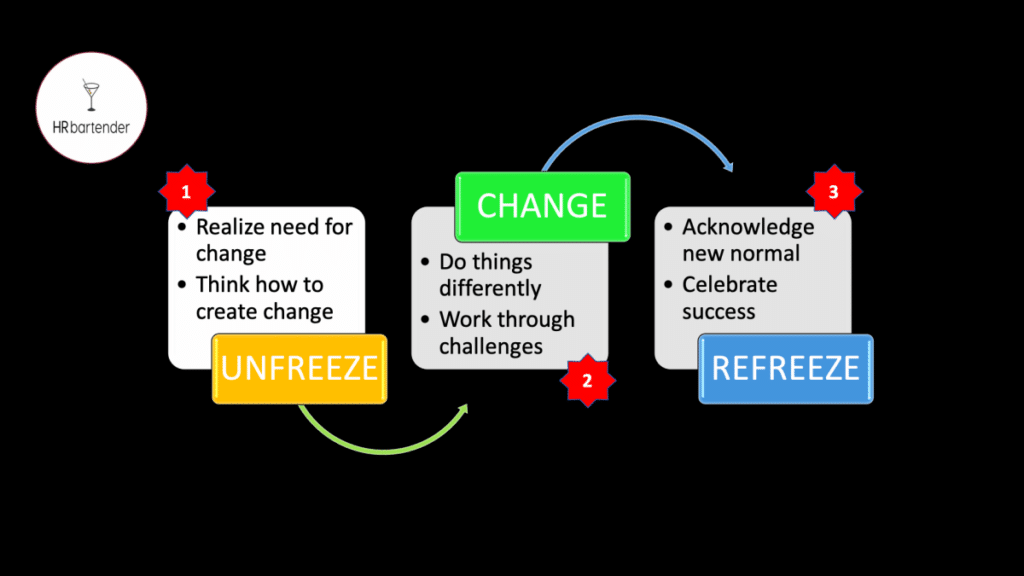Change Management: A 3 Step Model

Everyone needs to deal with change. Doesn’t matter if it’s a change we’ve decided to make or one that’s forced on us. It also doesn’t matter if it’s small or big. In fact, sometimes it’s the small changes we decide to make ourselves that can be the most difficult.
Regardless of the type of change you’re processing, it’s important to find a change management model that works for you. Personally, I’ve always like Lewin’s model. Kurt Lewin was a psychologist and major contributor in the areas of group dynamics and organizational development. His change model is very easy to remember, which is one of the reasons I like it.
The UNFREEZE stage is where we realize that change is necessary and how it will impact us. We start thinking about how to create change.
During the CHANGE step, we begin to do things differently. We work through the discomfort and challenges of changing our routine.
Finally, in the REFREEZE phase, we acknowledge the new normal. This is also when we can celebrate the success of dealing with the change.
I recently learned another way of thinking about Lewin’s model that I thought was pretty creative. I was facilitating the Society for Human Resource Management (SHRM) seminar on “Organizational Development: Designing Successful Organizational Performance” and we were talking about change interventions. One of the participants said they talk about change in terms of “pencils, pens, and Sharpies”. So, I asked for permission to share their idea here.
PENCILS represent those current processes, policies, or habits that we have. They can also be considered tentative. Things written in pencil can be erased and changed.
PENS are things that become more permanent. It might be an action we plan to have for quite some time, but still realize that at some point in the future it’s going to change.
SHARPIES are for those actions that are going to be around for a very long time. We want everyone to know about this change. Think bold and ingrained in our culture!
I immediately liked this 3-step approach because I could see it being used as part of organizational decision making. For example, the group can agree that an idea is “ready to be PENNED” or we don’t have enough experience with this process to “document it in a SHARPIE”. It also makes for a good visual.
Next time your organization is going through a change management process, think about where they are. Is the group still penciling? Or have they moved to pen? Maybe even Sharpie? It might help to guide the process change in a new and different way.
19